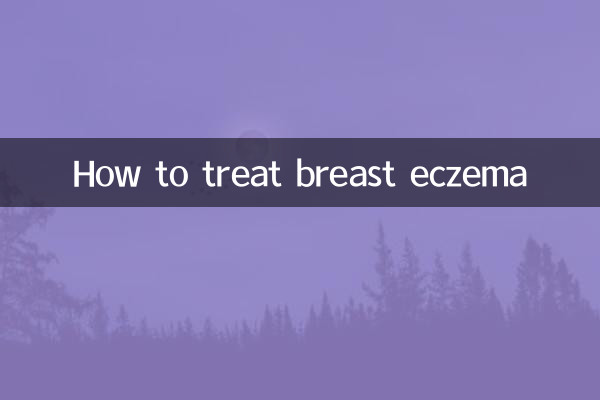Recently, breast eczema has become a health topic of concern to many women, especially new mothers and breastfeeding women. With changes in weather and increased stress in life, the incidence of breast eczema has increased. This article will combine the popular discussions and medical advice on the Internet in the past 10 days to introduce the treatment methods of breast eczema in detail and provide structured data for reference.
1. What is breast eczema?
Breast eczema is a common skin inflammation, mainly characterized by redness, itching, scaling, and even blisters and exudation of the skin around the breasts. It is often related to allergies, friction, sweat irritation, or hormonal changes, and is especially common in breastfeeding women.

2. Common causes of breast eczema
According to recent popular discussions and medical data, common causes of breast eczema include:
| reason | Proportion |
|---|---|
| Sweat and milk irritation during lactation | 45% |
| Allergic reactions (such as detergents, skin care products) | 30% |
| Hormonal changes (such as pregnancy, lactation) | 15% |
| Clothing rubs or non-breathable materials | 10% |
3. Treatment methods for breast eczema
Based on recent medical advice and popular discussions, the treatment of breast eczema can be divided into the following aspects:
1. Daily care
Keeping the skin around your breasts clean and dry is key. It is recommended to clean with mild water and avoid using harsh soaps or detergents. Wear loose-fitting, breathable cotton underwear to reduce friction and sweat accumulation.
2. Medication
Depending on the severity of your eczema, your doctor may recommend the following medications:
| drug type | Applicable situations |
|---|---|
| Moisturizer (such as Vaseline) | Mild eczema, for skin moisturizing |
| Topical hormonal ointments (such as hydrocortisone) | Moderate eczema, reducing inflammation and itching |
| Antibiotic ointment (such as erythromycin) | Eczema with bacterial infection |
| Oral antihistamines (such as loratadine) | severe itching or allergic reaction |
3. Special precautions during breastfeeding
For breastfeeding women, breast eczema needs to be treated more carefully. It is recommended to clean the breasts promptly after breastfeeding to avoid milk residue irritating the skin. If ointments are used, they should be washed thoroughly before breastfeeding.
4. Complementary therapies that have been hotly discussed recently
Recently, some natural and complementary treatments have also received widespread attention:
| therapy | Effect evaluation |
|---|---|
| coconut oil smear | Some users reported good moisturizing effect |
| oatmeal bath | Relieves itching and is suitable for mild eczema |
| aloe vera gel | Has anti-inflammatory effects, but needs to be tested for allergies |
5. When do you need medical treatment?
If breast eczema occurs in the following situations, it is recommended to seek medical treatment promptly:
1. Symptoms persist for more than a week without improvement;
2. Obvious exudation, suppuration or fever;
3. Affect breastfeeding or daily life;
4. Accompanied by other systemic symptoms.
6. Summary
Although breast eczema is common, it can be effectively relieved with the right care and treatment. Recent discussions have focused on special care for lactating women and attempts at natural therapies. No matter which method is chosen, safety and science should be given priority, and professional doctors should be consulted if necessary.

check the details

check the details